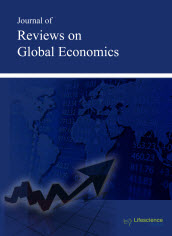|
|
Abstract: In this paper we develop for the first time a new approach to ratings of the investment projects of arbitrary durations, which could be applied to investments of any area of economy and in particular to energy projects.The ratings of such energy projects, as "Turkish stream", "Nord stream-2", energy projects relating to clean, renewable and sustainable energy, as well as relating to pricing carbon emissions (McAleer et al., 2018a,b,c; 2019) could be done using developed here new rating methodologies. In our previous papers the new approach to the ratings of the long–term investment projects has been developed (Filatova et al., 2018). The important features of that consideration are as following: 1) The incorporation of rating parameters (financial "ratios"), used in project rating and playing a major role in it, into modern long–term investment models, 2) The adequate use of discounting of financial flows virtually not used in existing project rating methodologies. Here, for the first time, we incorporate the rating parameters (financial "ratios"), used in project rating, into modern investment models, describing the investment projects of arbitrary durations. This was much more difficult task then in case of the long–term investment projects, considered by us in previous papers. We work within investment models, created by authors. One of them describes the effectiveness of investment project from perspective of equity capital owners, while other model describes the effectiveness of investment project from perspective of equity capital and debt capital owners. New approach allows use the powerful instruments of modern theory of capital cost and capital structure (BFO theory) (Brusov et al., 2015, 2018) and modern investment models, created by the authors and well tested in the real economy to evaluate investment project performance, including energy projects. Keywords: Arbitrary duration investment projects, rating, rating methodology, discounting of financial flows, Brusov–Filatova–Orekhova theory, coverage ratios, leverage ratios. |





